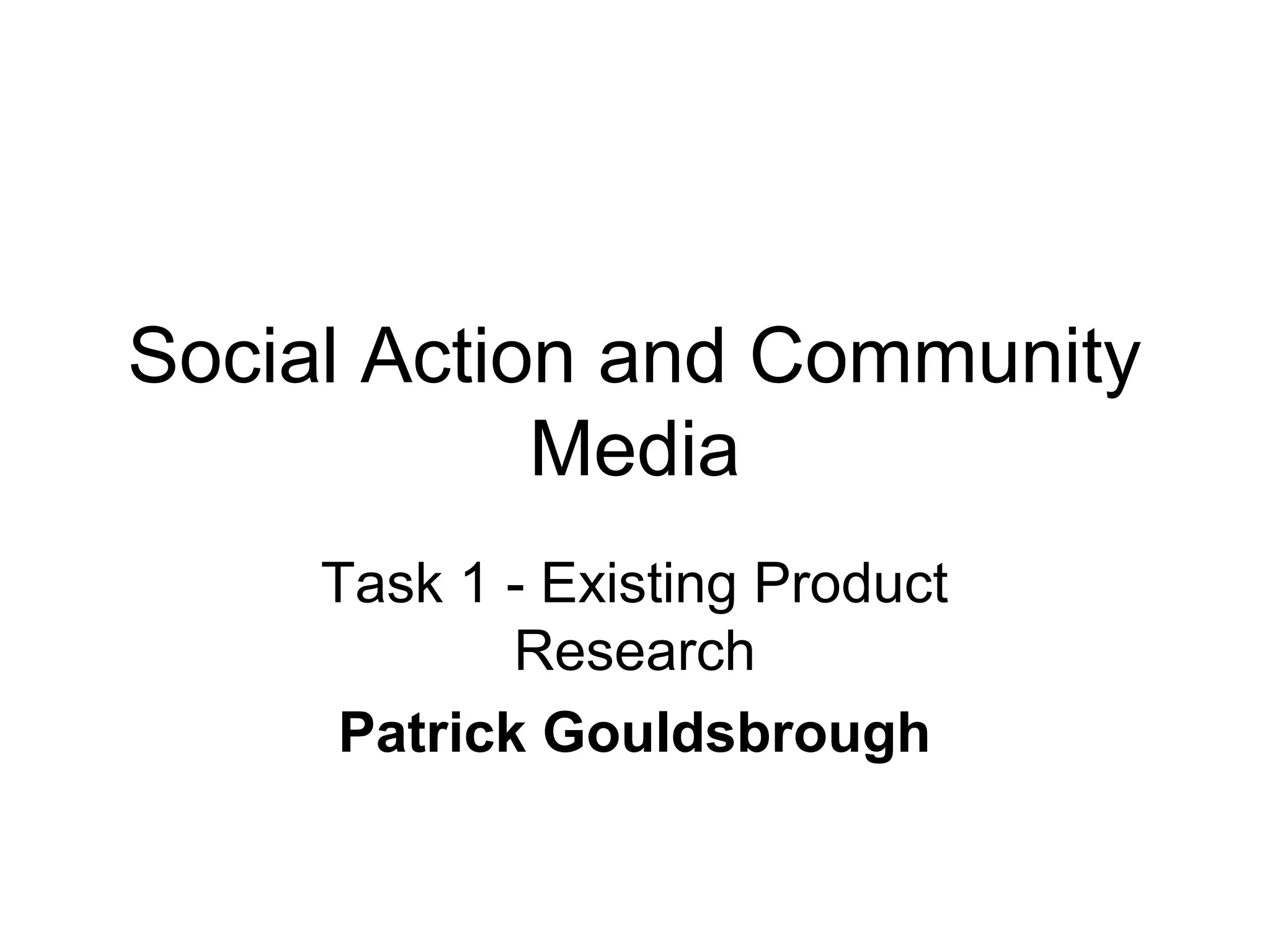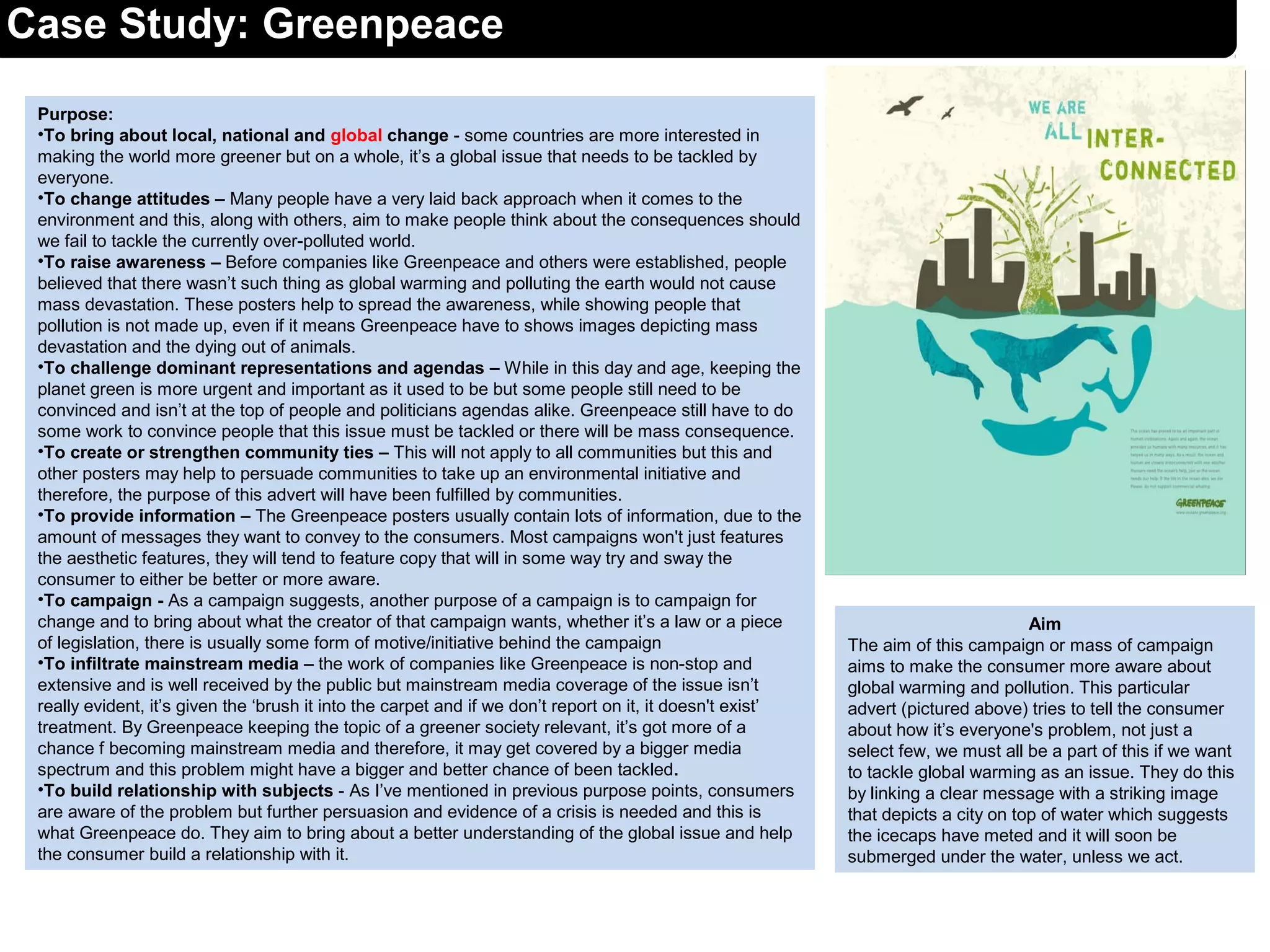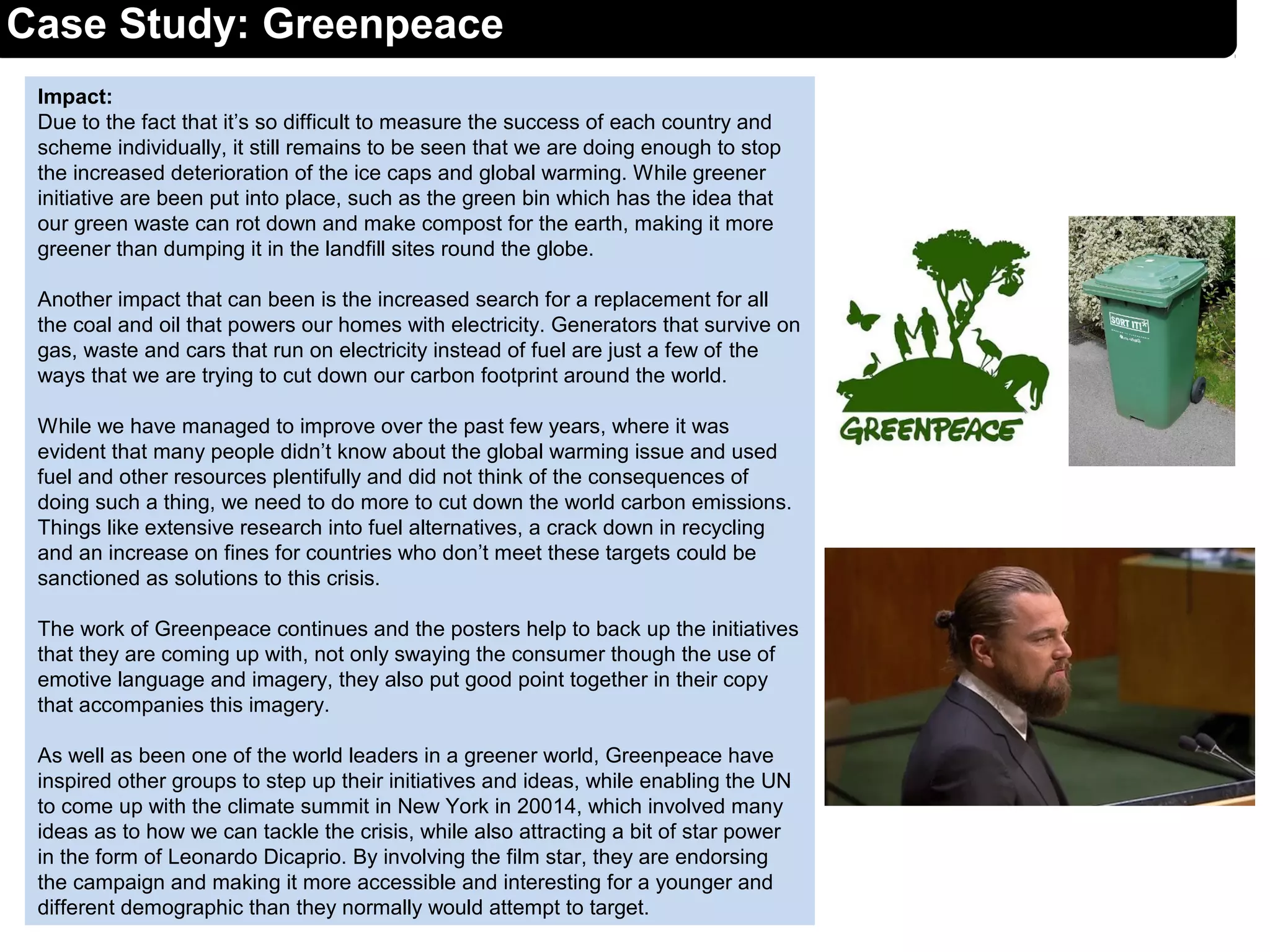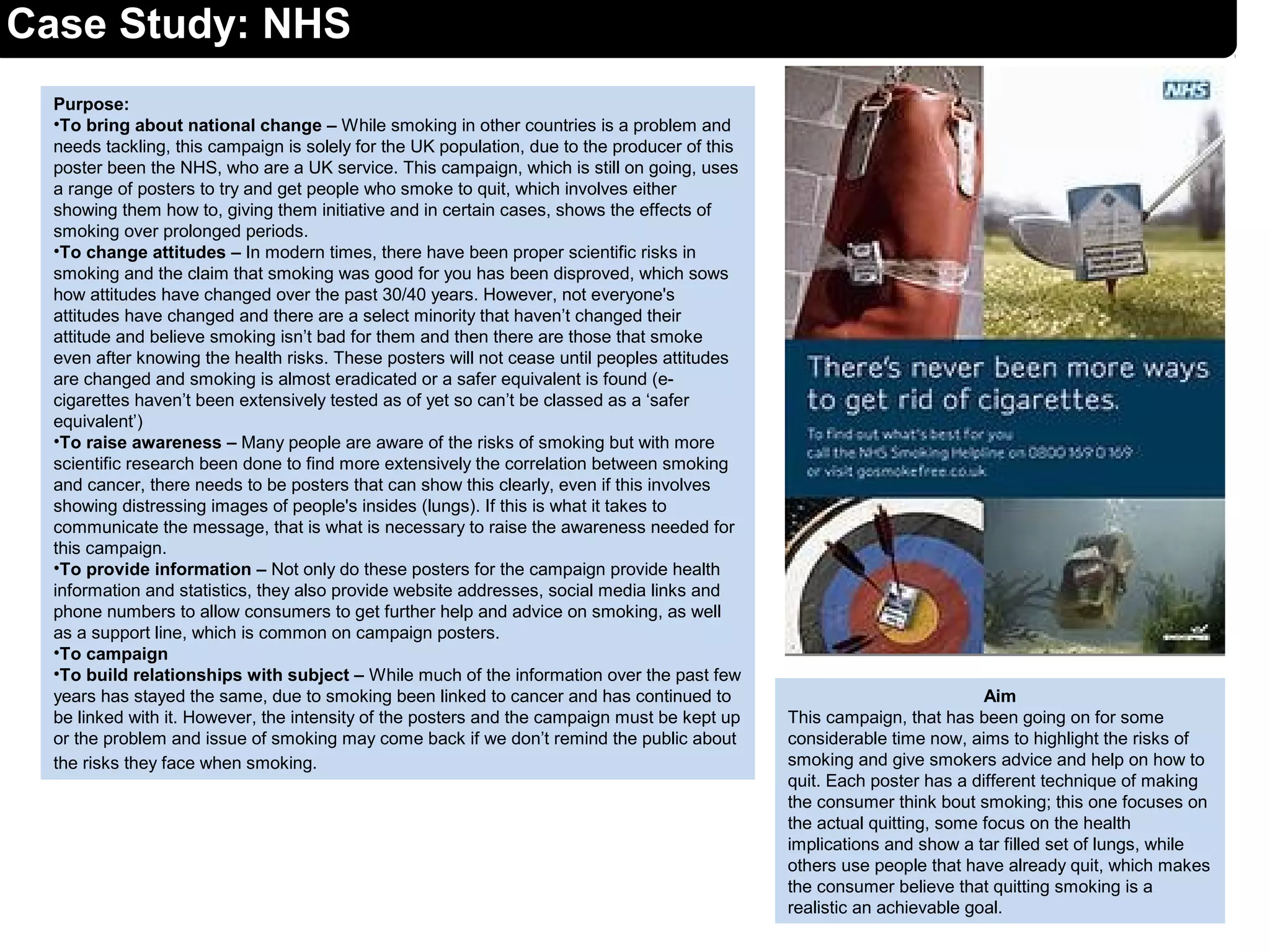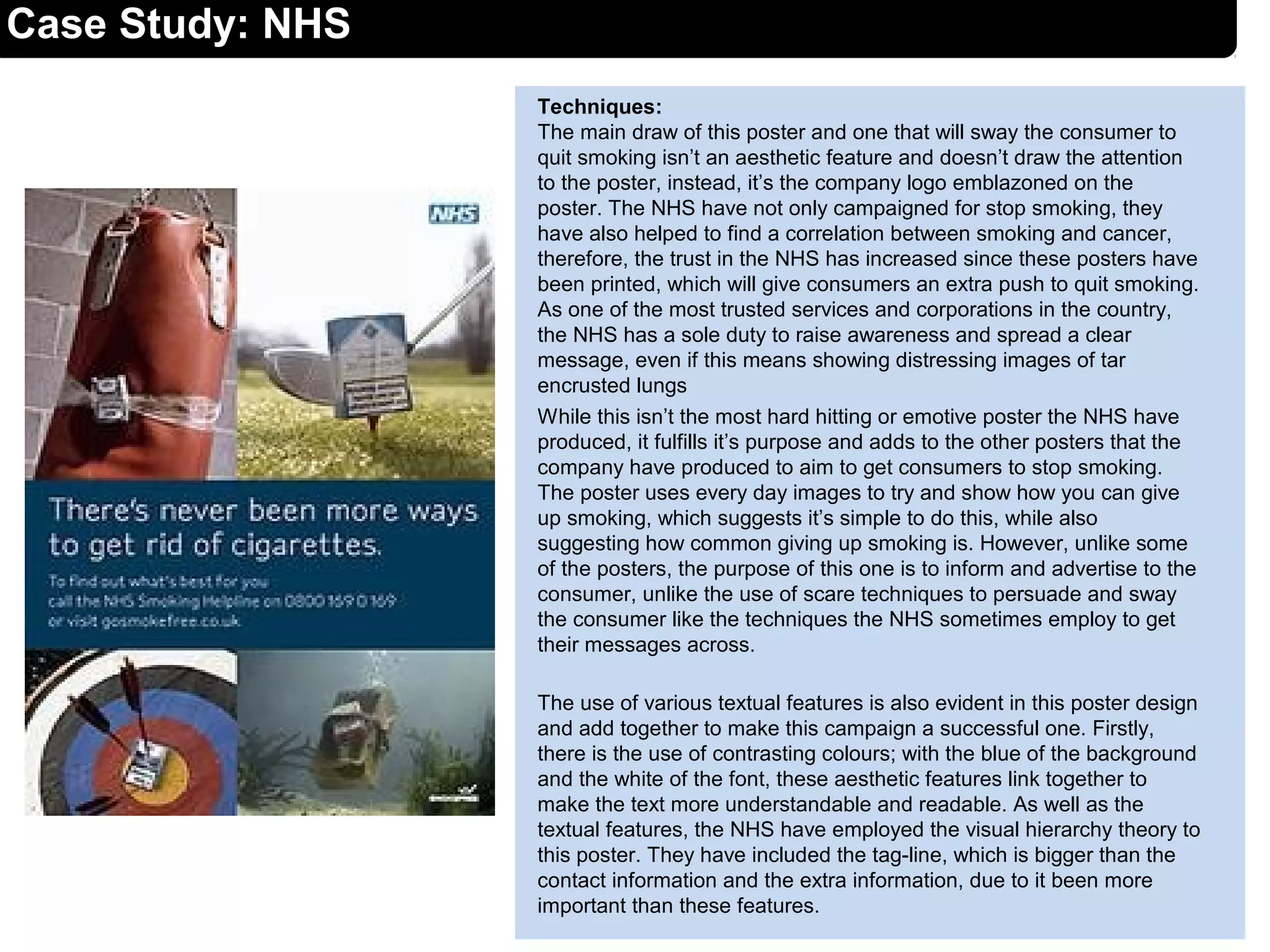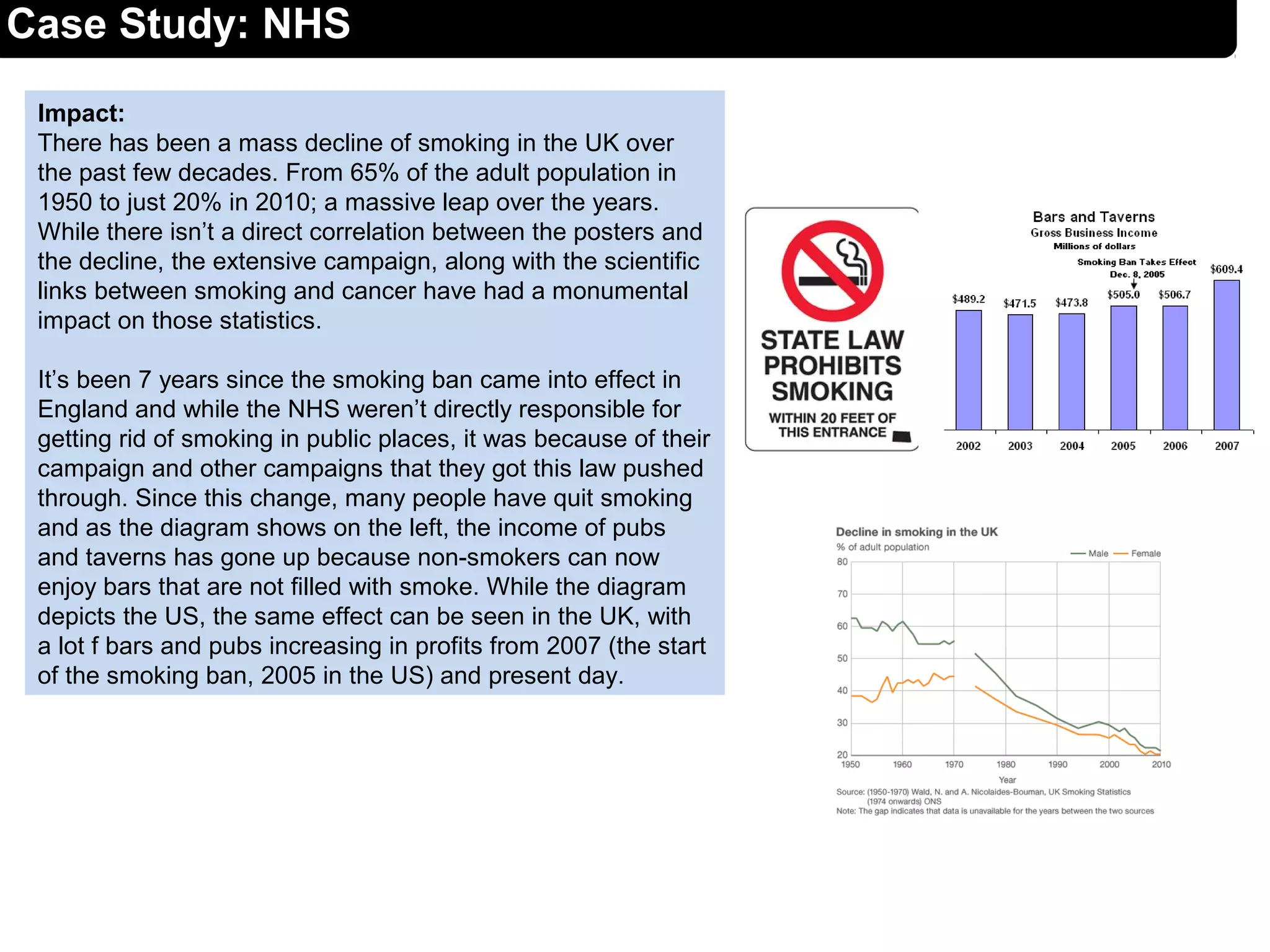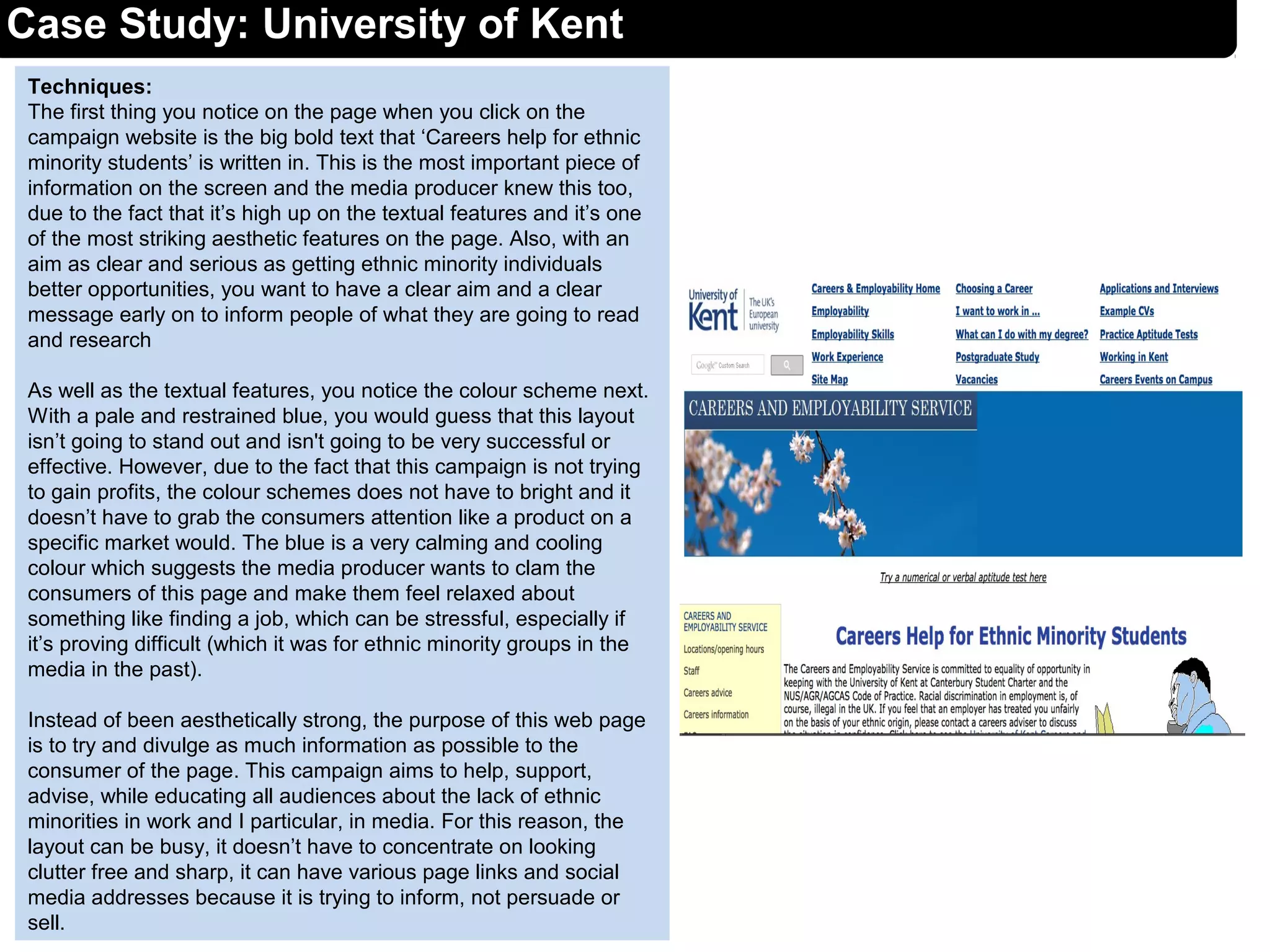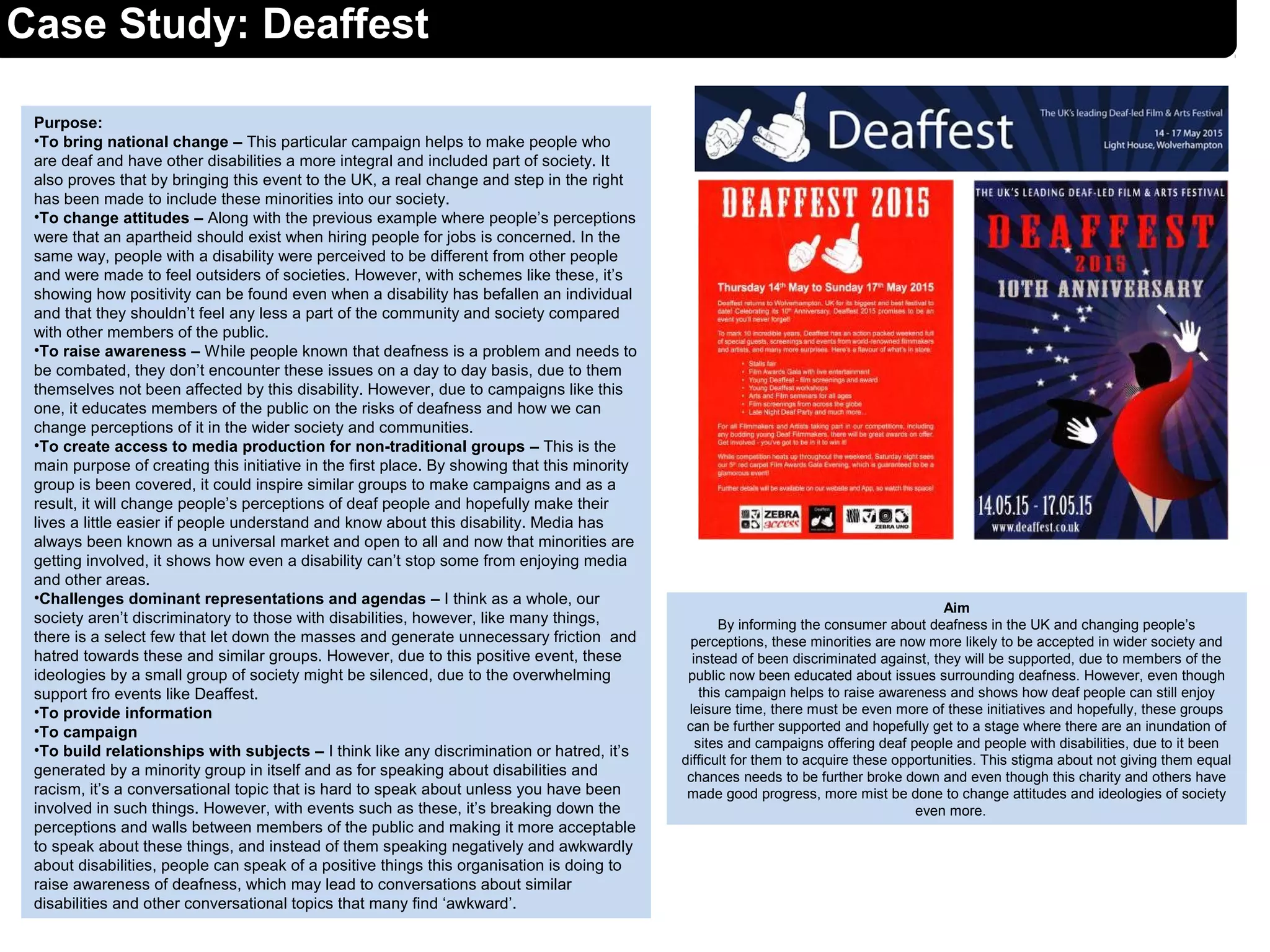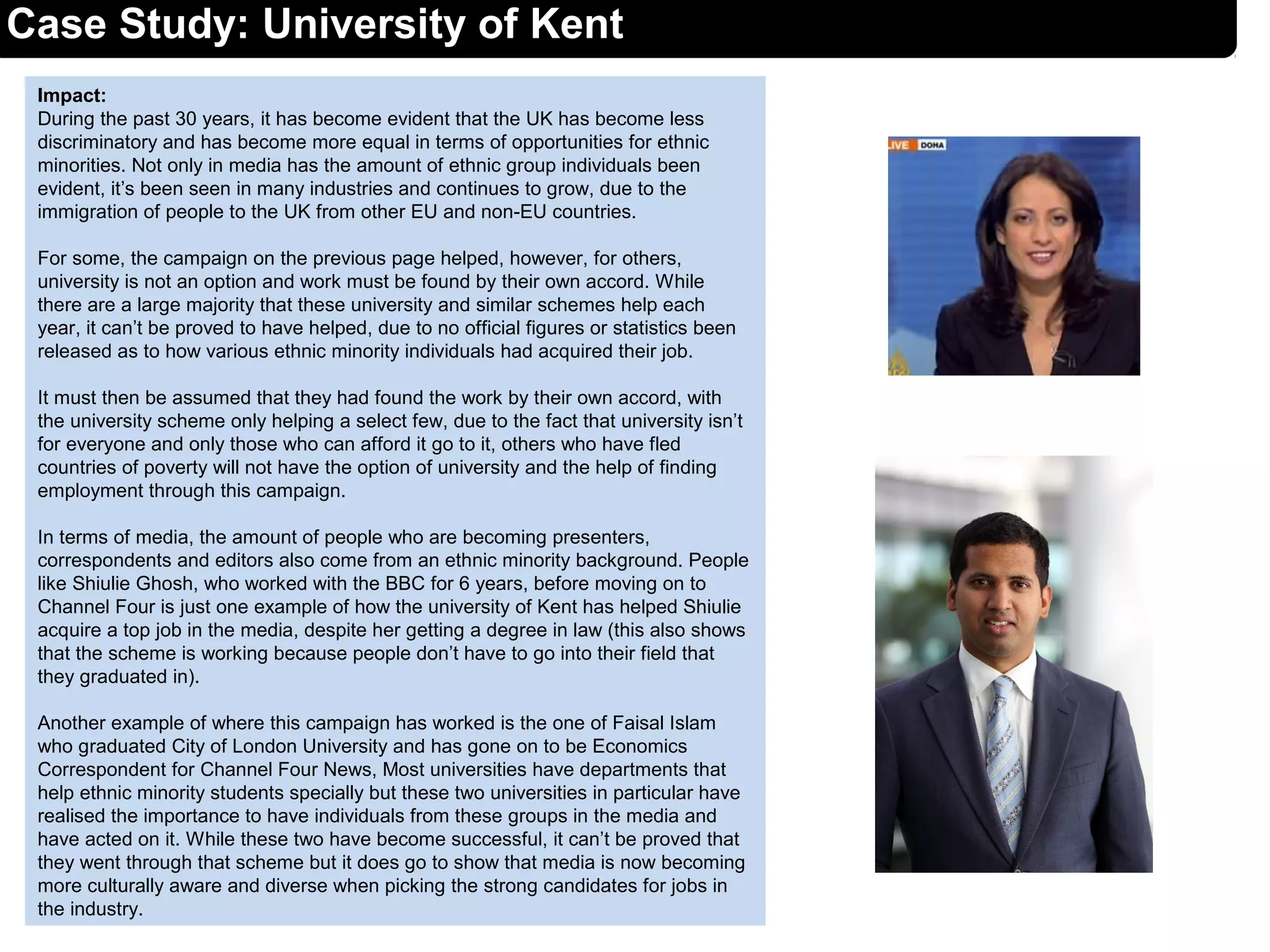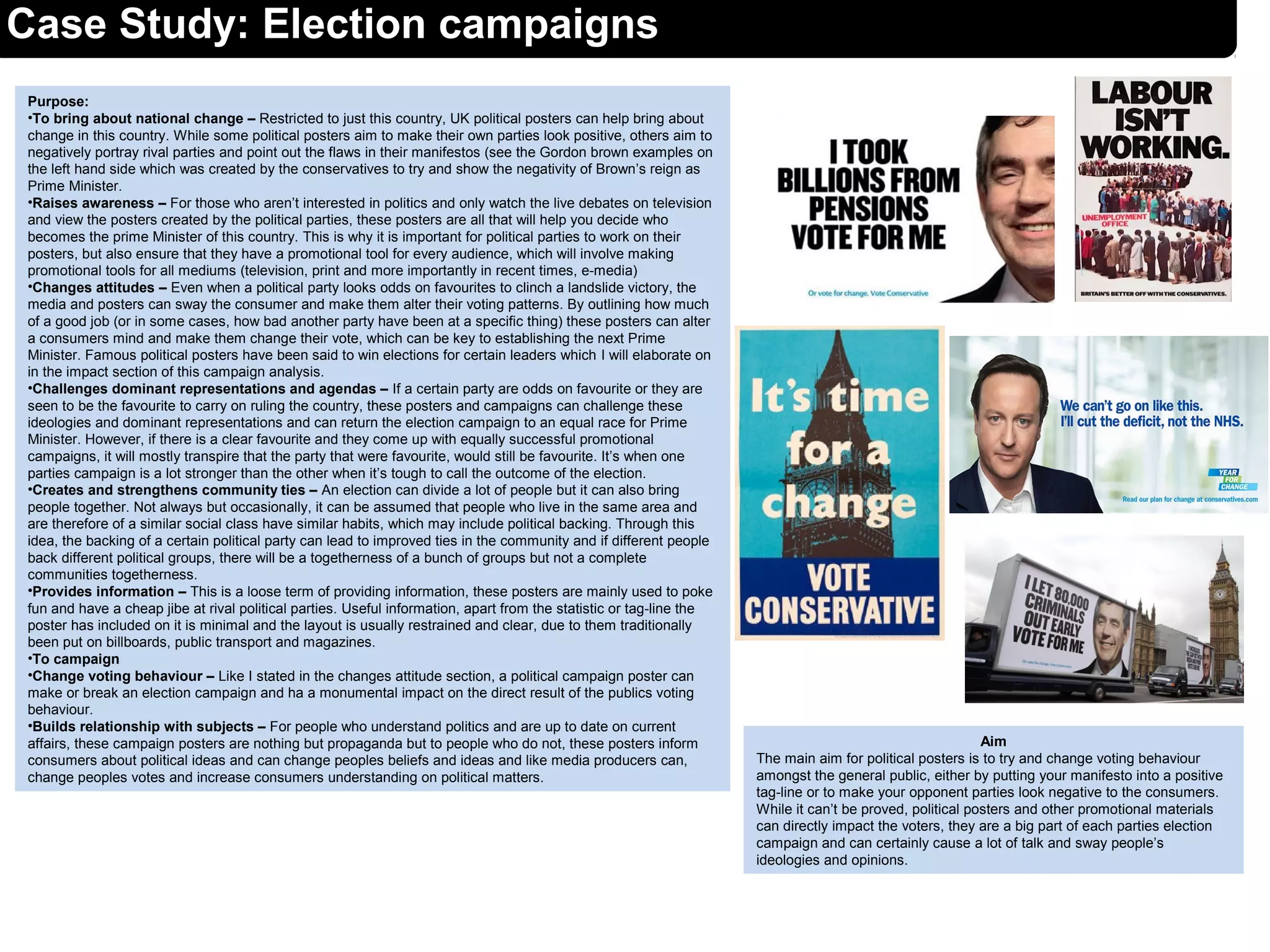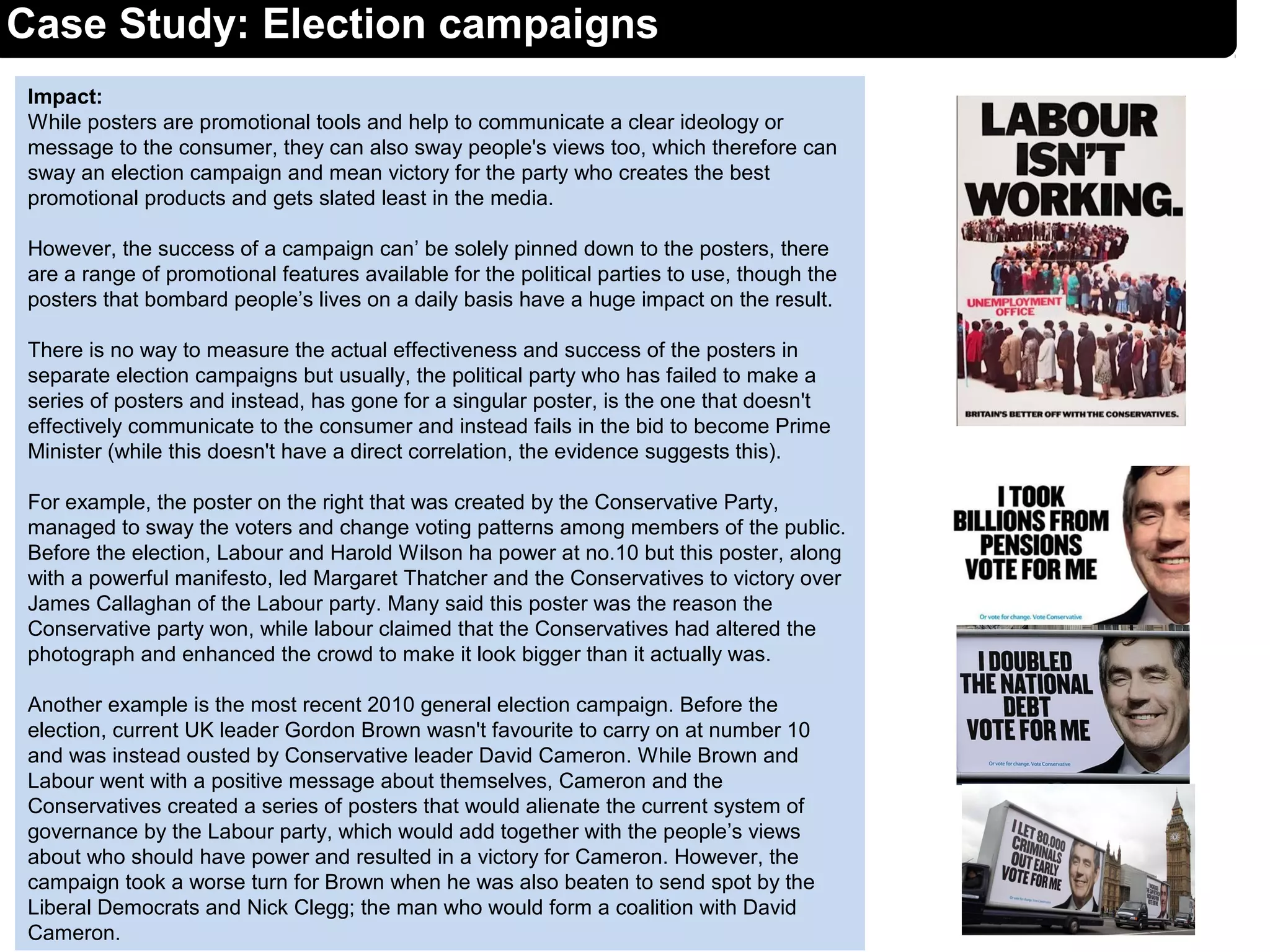This document summarizes a case study about a campaign by the University of Kent to promote careers in media for ethnic minority students. The purposes of the campaign are to bring about national change by increasing diversity in UK media, change attitudes about racial inequality in employment, raise awareness of the lack of representation of ethnic minorities in media jobs, and create more access and opportunities for non-traditional groups. The campaign aims to both inform ethnic minority students about career opportunities and educate non-ethnic groups about the inequality faced by ethnic minorities in media industries. Key techniques used in the campaign materials include using bold text to clearly communicate the purpose upfront and providing information and resources to build relationships with target audiences.
